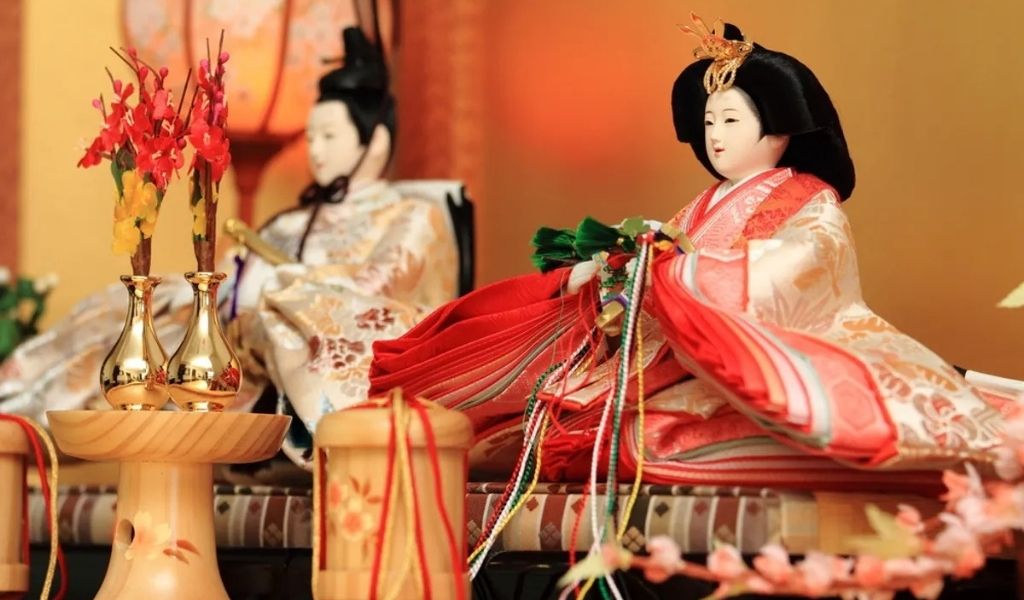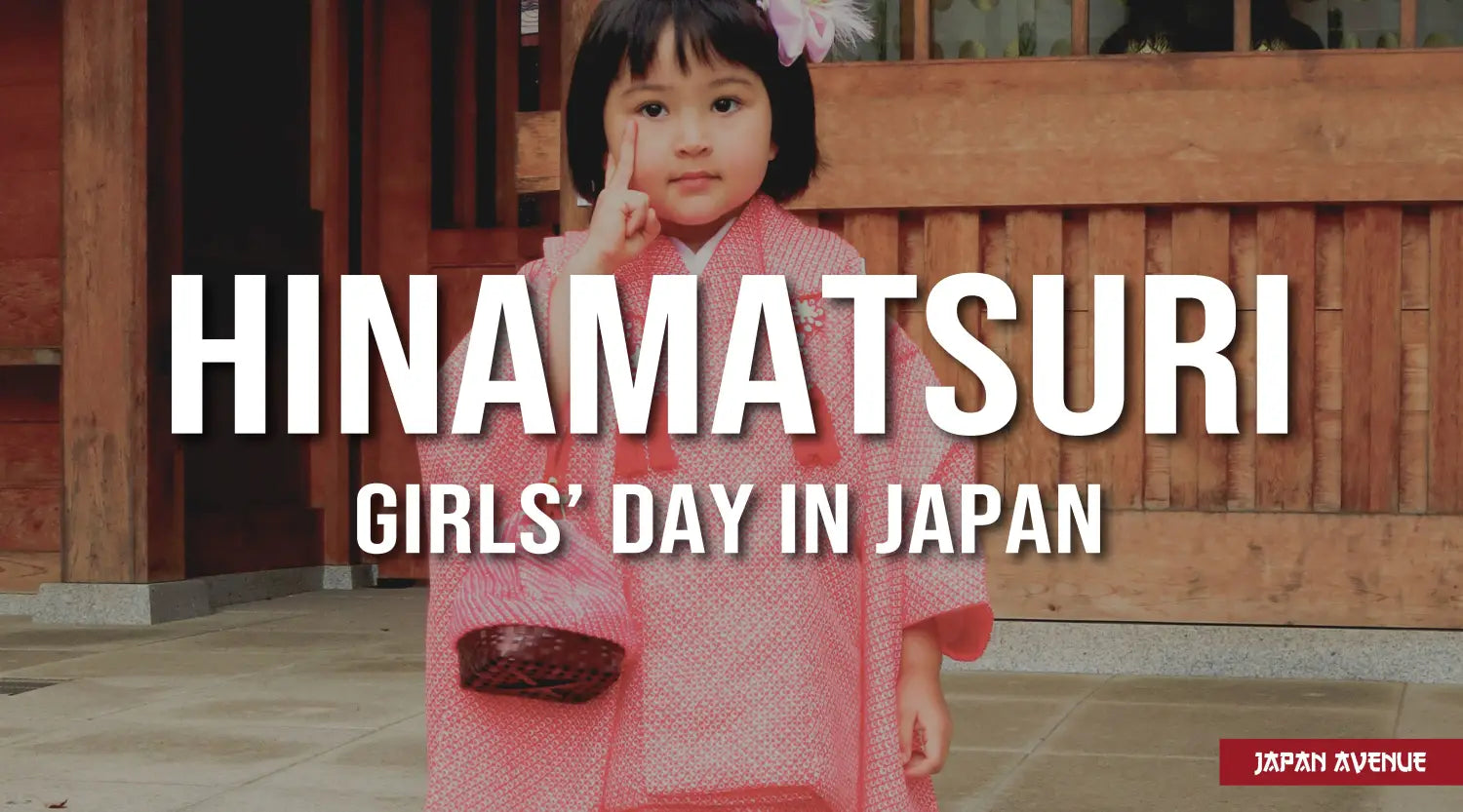March 3rd is a special date for all young Japanese girls: a day to celebrate the Hinamatsuri, a Japanese holiday dedicated to girls.
The Hinamatsuri, also known as Doll Festival, is a Japanese tradition where families celebrates their young girls in a similar way as Komodo no Hi does for boys. On this girls' day, magnificent lucky dolls decorate the houses and children get together and eat sweets.
Let's have a closer look at what this traditional Japanese holiday dedicated to little girls looks like.
🍑 The origin of the Hinamatsuri festival
Hinamatsuri is one of the 5 major annual ceremonies practiced by the Japanese imperial court ever since the Nara period. These celebrations named gosekku correspond to dates of the Chinese calendar with an identical odd number for the day and the month. These seasonal celebrations were very popular at the court during the Heian period and were officially taken over by the Tokugawa shogunate in the early 17th century.
Originally, the ceremony of the 3rd day of March was called Momo no sekku and celebrated the peach blossoms which opened at this time of the year. They were said to have the power to ward off evil spirits.

Around 1630, the festival took another vocation. The daughter of the emperor Go-Mizunoo and future empress Meisho received dolls and accessories as toys. In Edo, the tradition continued and it was customary to give dolls to princesses. In 1687, the Momo no sekku officially became the Hinamatsuri (doll festival). A way to restore the imperial power against the shogunate. The festival was then popularized in the 18th century and spread to the whole Japanese population.
|
In the Heian period, dolls already had a protective role as can be witnessed by the floating dolls ritual (Hina Nagashi festival) still practiced in some regions of the archipelago. Straw or paper dolls were placed in small rafts before being sent out to sea. The evil spirits were dispelled with them. This custom comes from a Shinto purification ritual that dates back to ancient times. Dolls were beaten on the body before being thrown into the sea to exorcise the evil spell. |
In Japanese culture, dolls are known to ward off misfortune and protect children. It is customary to give a doll as a gift at birth. Therefore, Hinamatsuri is a traditional holiday that is supposed to bring good luck to little girls and guarantee them a happy future.
👧 A festival dedicated to young girls
Each year, a little before March 3, families start preparations to celebrate this special day. Mothers and daughters set up a multi-level altar with dolls representing the characters of the Kyoto imperial court. Stores and public places also display miniature dolls.

On Hinamatsuri day, a platform is decorated with peach blossom dolls and some offerings are placed on it. The little girls wear their best long-sleeved kimono and visit the shrine before receiving gifts. On this holiday, children gather around elaborate dishes made for this special occasion.
Among the various culinary specialties are:
- Hishi mochi, a sticky rice cake made up of three layers in the colors of spring;
- Hina arare, a kind of sweet or savory puffed rice;
- Sakura mochi, a pink pastry made of red bean paste and surrounded by a cherry leaf;
- Chirashi sushi, a dish made of raw fish and rice;
- Ushiojiru or clam soup which symbolizes the union.
Adults also like to accompany these dishes with a small glass of sake.

In some places, it is a tradition for Japanese children to throw a wicker basket containing doll figures into the water to carry away evil spirits.
As soon as the party is over, the traditional dolls are stored in cardboard or glass boxes for protection. It is important not to leave the figurines lying around, not only to avoid the risk of mould due to humidity, but also to avoid compromising the girl's marriage later on. Otherwise, a strong superstition says that she will have to wait a long time before getting married.
🎎 The Hina doll placed in the spotlight
Far from being a toy, the Hina doll is a luxury piece that represents the characters of the imperial court during the Heian era. Hina dolls are made of porcelain and dressed in silk. They are particularly expensive and the collections depend on the financial means of the households. Most of them present only a few dolls, but the most elaborate collections can include up to 15 figurines wearing traditional clothes and accessories.
They are displayed on an altar composed of several levels. The two main characters are Empress Ohinasama and Emperor Odairisama who represent both the power and the marriage of the Heian period. These expensive collectible dolls are passed down from generation to generation. They can also be bought when a girl is born.

The display of the dolls on the altar
All the figurines are displayed on a platform decorated with a red felt. It has 7 levels for a complete collection, but there may be less than that.
The imperial couple (dairi-bina) is placed at the top of the altar, at the top of the pyramid. Placed in front of a screen and between two lanterns, the emperor wears a traditional hat and a staff while the empress holds a fan. Between them are vases of peach flowers.
The three court maids stand on the second step. They are holding pitchers of sake and pastries can also be found on this step.
The floor below is occupied by five musicians. They carry instruments like traditional drums and flutes.
One floor below the musicians houses two bodyguards or court officials. These characters hold weapons and between them are some miniature tables and Hishi mochi.
Next is the court servants arranged between two trees. They are three drinkers with different expressions.
The last two floors contain accessories from the Heian period.

🍰 The Hinamatsuri celebration nowadays
This traditional celebration is somewhat less popular today than it used to be in the past. Often the exhibition of dolls is limited to the imperial couple or the empress. They are sometimes replaced by other Japanese dolls, such as kokeshi, cloth figurines or origami. These days, the party is a kind of birthday party for the little girl who is very happy to see her friends.
If you are planning a trip to Japan at the end of February or beginning of March, don't hesitate to visit the capital. In Tokyo, some hotels and museums have very nice exhibitions. Also, don't miss the Big Hina Matsuri festival in Katsuura city (Chiba). You will get to see a huge presentation of dolls and enjoy some delicious food.



